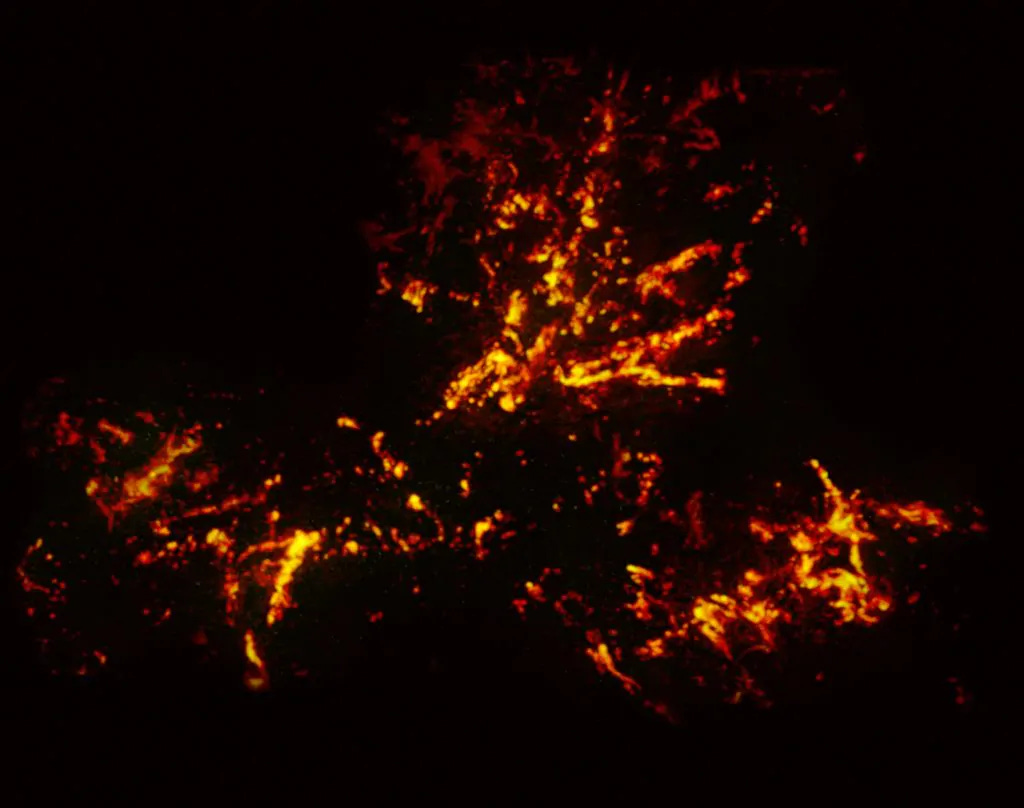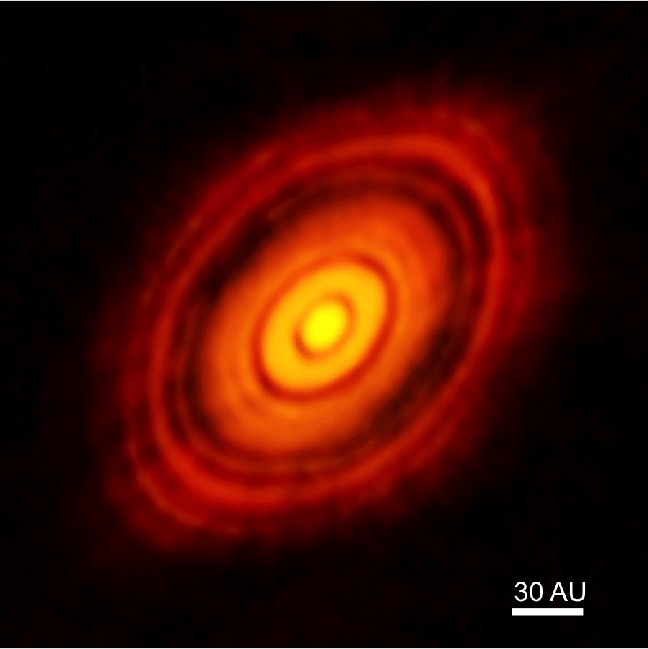The Life and Death of a Star
Discussing the Lifecycle of Stars from Birth to Death and their Impact on Us
When we gaze up at the night sky, we are met with a vast expanse of shimmering points of light. Much like us, each of these stars, from the faintest twinkles to the brightest beacons, are on a journey through their lifecycle. Just as living organisms on Earth undergo cycles of birth, growth, and eventual demise, stars too, experience a life cycle, albeit on a grand and awe-inspiring timescale.
In this article, we will explore the intricate processes and stages of a star's life. From their humble beginnings in cold, dark molecular clouds to their sometimes dramatic and explosive ends.
A Star is Born
The life of a star begins in the quiet, dark corners of the galaxy, within vast structures known as molecular clouds.
Into the Clouds
Molecular clouds, often referred to as stellar nurseries, are cold, dense regions primarily composed of hydrogen molecules. These clouds are sprinkled with dust and other elements, painting a picture of a dark, serene, and cold environment. It's in the heart of these cosmic cradles that the initial stages of star formation kick into gear.
A Spark in the Darkness
Within these vast clouds, certain regions can become unstable. Triggered by external factors like a nearby supernova explosion or internal fluctuations, these areas start collapsing under their own immense gravitational pull. As material begins to clump together, the centre of these regions grows denser and hotter, setting the stage for the birth of a new star.

The First Glimmer of a Star
As the collapsing region continues to draw material inward, a protostar begins to form at its core. This early stage in a star's life is marked by ongoing accretion of material from its surrounding environment. The protostar's temperature rises steadily, but nuclear fusion hasn't started yet. Surrounded by a rotating disk of gas and dust, this baby star is on its way to join its siblings in the cosmos.
Adulthood
Once a protostar has gathered enough mass and its core temperatures reach a critical threshold, it ignites, marking the onset of nuclear fusion. With this, the protostar graduates to become a full-fledged star, entering the longest and most stable phase of its life: the main sequence.
Hydrogen Fusion
At the core of a main sequence star, the intense pressure and high temperature allow for hydrogen atoms to fuse together, forming helium. This process, known as nuclear fusion, releases an immense amount of energy, which radiates outward as light and heat. It's this energy that powers a star and makes it shine brilliantly in the sky.
Smaller = Longer Life
A star's mass is the primary determinant of its position on the main sequence and, subsequently, its overall lifespan. Smaller, less massive stars burn their fuel more slowly, leading to lifespans that can stretch billions of years. In contrast, massive stars, with their greater gravitational pressure, burn through their hydrogen fuel rapidly, living fast and dying young in cosmic terms. Their main sequence phase might last only a few million years.
Equilibrium
During this phase, a star finds itself in a state of hydrostatic equilibrium. The outward push of radiation pressure, produced by the nuclear reactions in its core, perfectly counterbalances the inward pull of its own gravity. This equilibrium ensures the star remains stable and doesn't collapse or expand significantly. It's a delicate balance, one that the star will maintain as long as it has sufficient hydrogen fuel in its core.
Old Age
As stars exhaust their hydrogen fuel, they undergo significant transformations, which are predominantly guided by their mass. The main sequence chapter closes, giving way to red giants for low-mass stars and red supergiants for their high-mass counterparts.
Low-Mass Stars
For stars with masses similar to or slightly greater than our Sun, the end of the main sequence phase brings forth new challenges and transformations.
Red Giant Phase
As the core hydrogen gets depleted, hydrogen burning continues in a shell around the core. This causes the star to expand significantly, transforming it into a luminous red giant. During this phase, the star's outer layers are puffed up, while its core contracts and heats up.
Helium Burning
Eventually, the core's temperature reaches a point where helium can undergo fusion to form carbon and oxygen. This new fusion process renews the star's energy source, albeit temporarily.
High-Mass Stars
Stars several times the mass of our Sun experience an even more dramatic evolution post their main sequence phase.
Red Supergiant Phase
These massive stars expand far more than their low-mass counterparts, becoming red supergiants. Their interiors witness a complex layering of fusion processes. As hydrogen in the core gets exhausted, fusion continues in shells, producing heavier elements like carbon, oxygen, and beyond.
Successive Fusion Stages
High-mass stars have the capability to fuse heavier elements in their cores, going through successive stages where elements like carbon, oxygen, and even silicon undergo fusion. This leads to the creation of an iron core, a significant turning point in the star's life.
Death of a Star
The inevitable end of a star's life can manifest in a quiet fading away or in a spectacular explosion that outshines an entire galaxy. The destiny of a star hinges largely on its original mass.
Low-Mass Stars
Stars like our Sun and those with even lesser mass face a relatively peaceful conclusion.
Planetary Nebula
As a red giant exhausts its helium fuel, its outer layers are pushed away by strong stellar winds. This ejected material forms a colourful shell of ionised gas, known as a planetary nebula. Contrary to its name, it has nothing to do with planets; the name stems from its round appearance in telescopes, resembling a planet.
White Dwarf
Finally, what remains of the star after shedding its outer layers is a hot, dense core called a white dwarf. Devoid of fusion, a white dwarf slowly cools and dims over billions of years, eventually becoming a cold, dark "black dwarf" - though the universe isn't old enough yet for any black dwarfs to exist.
High-Mass Stars
Massive stars meet a more dramatic and cataclysmic fate.
Supernova Explosion
As a high-mass star develops an iron core, it reaches a point where no further fusion can provide the energy to counteract gravity. The core collapses rapidly, and the star explodes in a supernova, an event so brilliant that it can momentarily outshine an entire galaxy.
Neutron Star or Black Hole
Following the supernova, the remnants of the core can form a neutron star, an incredibly dense object made almost entirely of neutrons. If the core's mass is even greater, gravity can force it to collapse further, leading to the formation of a black hole, a region of spacetime where gravity is so strong that nothing, not even light, can escape from it.
Afterlife
While a star's death may seem like the final chapter, the story is far from over. The universe ensures that the remnants of stars play pivotal roles in shaping the future of the cosmos.
The explosion of massive stars not only scatters elements across space but also acts as a catalyst for the formation of new stars. Supernova remnants, rich in heavier elements, mix with the interstellar medium. This enriched material can eventually coalesce to form new stars and planetary systems. Our own solar system, for instance, owes its diverse composition to the remains of past stellar explosions.
Stars Around. Stars Within.
Stars are the alchemists of the universe, forging elements that form planets, moons, and even life. The carbon in our DNA, the iron in our blood, and the oxygen we breathe - all were once part of a star's lifecycle. In this sense, we are not merely observers of the stars; we are their legacy.
The study of stars, their birth, life, and eventual demise, is not just a pursuit of understanding distant luminous points in the night sky. It's a quest to understand our origins, our place in the universe, and the intricate web of processes that connect every part of the cosmos. As Carl Sagan stated, "The cosmos is within us. We are made of star-stuff."
And so, as we gaze up at the night sky, let us not just see stars. Let us see stories, legacies, and a reflection of our journey.













Really fun! I think about stellar formation (as a larger mental exercise) any time I can't fall asleep.
If I haven't recommended it yet, let me do so now: "The Five Ages of the Universe" would be really fun for you to read, I think.